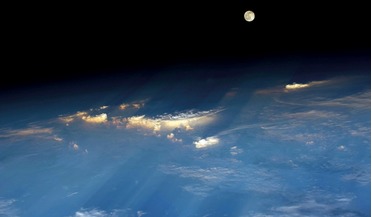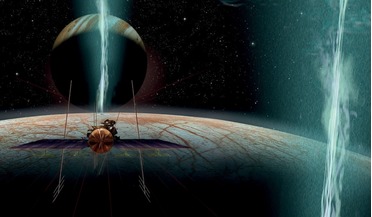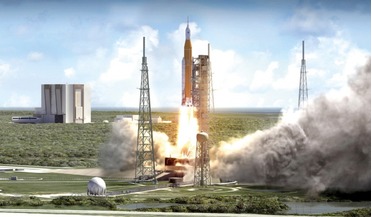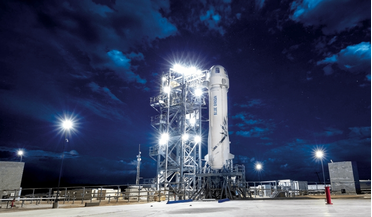 June 2017
How to build a Moon base cheaply
June 2017
How to build a Moon base cheaply
... are not only useful for transport but also for technological production. Explosive processes in regolith, when hydrogen, hydrocarbon, carbon, chloride and fluoride enter the collector, create a regenerative reaction that produces iron, titanium...
 October 2017
Cassini observations open up Saturn’s atmosphere
October 2017
Cassini observations open up Saturn’s atmosphere
... the stratosphere and beyond to the upper atmosphere. Saturn in the near-IR stretched colours. The atmosphere is dominated by hydrogen and helium gas accreted at the time of Saturn’s formation, 4.5 billion years ago. Mixed in are trace gaseous...
 March 2018
Plumes on Europa - tasting an extra-terrestrial ocean
March 2018
Plumes on Europa - tasting an extra-terrestrial ocean
... (UV) these emissions can be identified more easily. It was during an observation of these UV emissions that a surplus of oxygen and hydrogen spectral lines were detected near Europa’s south pole. The emission was characteristic of water vapour being...
 October 2018
Sustainable ways of living on the Moon and Mars
October 2018
Sustainable ways of living on the Moon and Mars
... Sabatier in 1910, the system involves the reaction of hydrogen with CO2 at a high temperature, between 200-400 ...production is indeed possible. ‘Macronutrients’ like O2, carbon, hydrogen, nitrogen and potassium are present in lunar and Martian soil...
 July 2019
Lessons from our first race to the Moon
July 2019
Lessons from our first race to the Moon
... the use of liquid oxygen but also the more technically demanding liquid hydrogen (boiling point of -253C (-423F). The energy released by burning liquid hydrogen in oxygen was greater than other fuels such as kerosene on a pound for...
 October 2019
Reusability is key to expanding future space launch business
October 2019
Reusability is key to expanding future space launch business
...). New Shepard is powered by a liquid oxygen/liquid hydrogen engine, which is being adapted for use as the ...designing a lunar lander concept, which incorporates a liquid oxygen/liquid hydrogen engine to enable a soft landing. It has an interesting ...